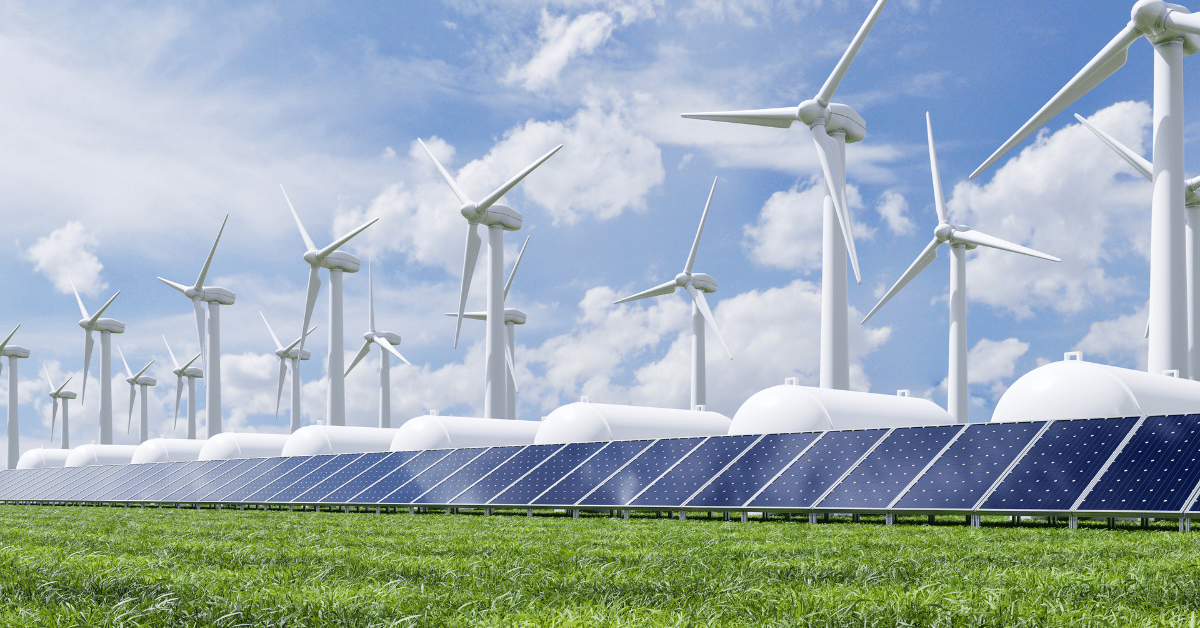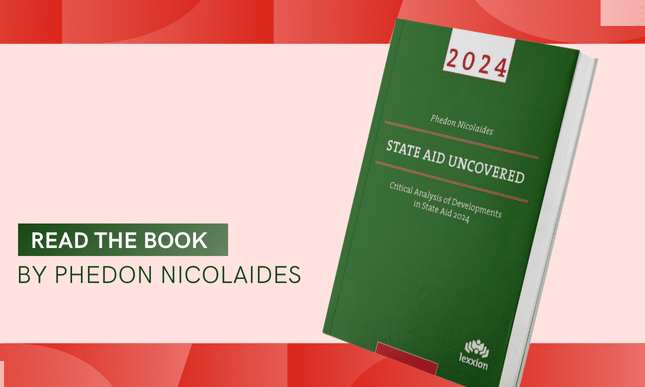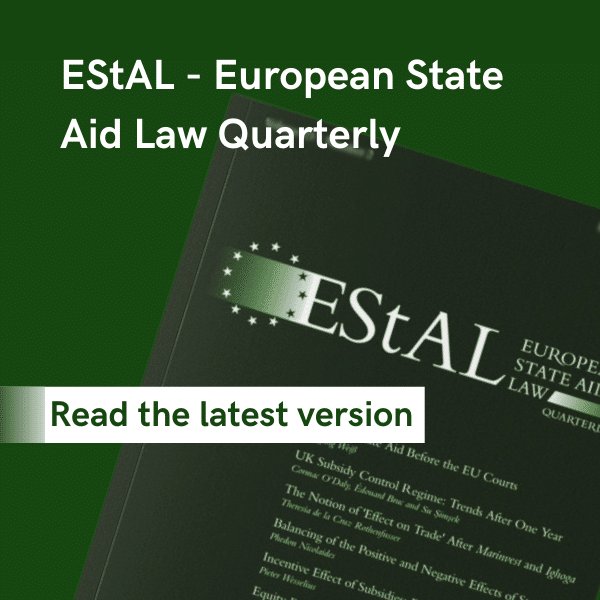
Introduction
As indicated by its title, the Temporary Crisis and Transition Framework [TCTF] allows for State aid whose purpose goes beyond the immediate relief of the costs of the market disruption caused by the Russian invasion of Ukraine.
Europe’s energy policy does not only aim to reduce dependence on Russian gas, but also to shift to low or zero carbon energy sources. In this context, addressing climate change coalesces with Europe’s geopolitical objectives. This is the reason why the TCTF covers also measures that support the generation of clean energy.
The problem with green electricity produced from solar panels and windmills is that it is intermittent. If the sun does not shine or the wind does not blow, there is no electricity. Countries with water dams overcome this problem by pumping water back to the dam during the day and then release it during the night to generate electricity. Another solution is to store electricity.
Recently, the Commission approved a Hungarian aid scheme for storage facilities for energy generated by renewable sources [SA.102428].[1] The scheme was notified under the Temporary Crisis and Transition Framework. It aimed to incentivise investment in storage facilities so that electricity would be available after it was generated.
Form of aid
According to the Commission decision, “(11) the measure provides for two forms of aid to be granted cumulatively to the supported projects: i) direct grants to support the initial investment, fixed at EUR 350 000/MW (disbursement in HUF) for every supported project (the ‘investment grant’); and ii) annual support for operation for a 10-year period in the form of a two-way contract for difference (‘CfD’) to cover the balance of any residual funding gap, after the payment of the investment grant (the ‘annual support’).”
The annual support would be terminated after the initial 10-year period, regardless of the economic life of the projects.
Amount of aid
“(13) The amount of the operating support will be calculated on a monthly basis, as the difference between the amount of revenues tendered by each project as necessary for its financial viability (‘Bid Revenues’, […]) and the so-called reference revenues that each project is expected to earn from its participation in the various electricity markets (‘Market Revenues’). The annual support will be subject to regular monitoring, review, and adjustment by the Hungarian Energy and Public Utility Regulatory Authority (‘MEKH’) to prevent overcompensation.”
“(14) The reference revenues will be calculated by MEKH based on a benchmark revenue characterising the storage facilities of similar size and capacity. The benchmark revenue calculation will take into account both wholesale and balancing market revenues.”
“(18) The benchmark prices will be set as monthly averages on the relevant markets, such as day ahead, intraday, balancing and capacity markets for electricity. This incentivises storage operators to bid in hours when their earning is the highest, and there is no bidding obligation in hours when the price does not cover marginal costs.”
According to the Hungarian authorities, “(19) the combination of the investment grant with the annual support is an appropriate instrument to achieve simultaneously several objectives, all crucial to allow the immediate implementation of investments in storage. More specifically, (a) cover the funding gap that remains after granting the investment grant; (b) hedge against the volatility of market revenues, which cannot be reliably predicted over the lifetime of the projects, enhancing critically the bankability of the projects; (c) avoid overcompensation and windfall profits in case of unexpectedly high market revenues, as CfD acts as a claw-back mechanism as regards any excess market revenues; and provide a mechanism incentivising effective market participation.”
The budget of the scheme was estimated at EUR 1.134 billion. It would support the installation of at least 800 MW/1600 MWh of new electricity storage capacity. About EUR 161.5 million for the investment grant would be funded by the Recovery and Resilience Facility [RRF] ’) and EUR 121.5 million by the Modernisation Fund, making a total of EUR 280 million contributed by the EU. The remaining amount of about EUR 857 million for the annual support for 10 years of operation would be come from the “Storage Support Account” that would generate revenue from a levy imposed on electricity users.
Aid beneficiaries
The aid beneficiaries would be selected through a competitive tender process. Aid would be granted only to newly installed capacity. All electricity storage technologies would eligible to be funded. Selected projects would be obliged to provide electricity on a regular basis for a minimum of ten years.
Unusually, the scheme would also support installations in neighbouring countries that would commit to provide electricity to offset supply shortfalls of green electricity in Hungary.
With respect to the annual support, the scheme envisaged no claw-back mechanism because “(41) the profitability without the annual support will be very low with substantial downside risk for the operators with longer technical lifetime. Therefore, Hungary considers the risk of overcompensation to be low, rendering a claw-back not necessary beyond the 10 years of annual support.”
Both a low and a high threshold would be set for bidding prices. The low threshold would prevent under-bidding strategies to exclude competitors and would not be less than 10% of the high threshold. The high threshold would aim to prevent collusion and would correspond to a price that would result in an IRR of 10% after deduction of the investment grant from the initial capital expenditure.
Funding gap analysis
Hungary “(62) provided estimations of the business plan for a reference project of electricity storage with a capacity of 6 MW to be realised under the scheme. The business plan includes estimations for the cost of investment, operation, financing, and taxes as well as revenues from energy arbitrage and the balancing markets.”
The funding gap calculation showed that the discounted net revenue that would be generated by the reference project with the investment grant was only 47% of the initial investment cost that included a fee of EUR 75,000 for connection to the electricity network. This meant that the funding gap was 53%. This justified the provision of the annual grant. The IRR of the reference project was 10% and the WACC was 8.5%.
Cumulation and compliance with the “do no significant harm” principle
Aid under the scheme could not cumulated with other GBER-based aid, de minimis aid or TCTF-based aid for the same eligible costs. In addition, Hungary undertook to comply with the “do no significant harm” principle and with all the relevant environmental rules.
Compatibility with the internal market
Since the scheme would be financed by a compulsory levy, the Commission concluded that it constituted State aid because state resources would be utilised to confer a selective advantage that was capable of affecting trade and distorting competition.
The compatibility of the scheme with the internal market was assessed on the basis of the conditions laid down in points 77 and 78 of section 2.5 of the TCTF.
What is interesting is that the Commission also checked compliance of the funding mechanism with Articles 30 and 110 TFEU. “(103) Any levy that has the aim of financing a State aid measure and forms an integral part of that measure needs to comply in particular with Articles 30 and 110 TFEU.”
“(108) A charge that is imposed on domestic and imported products according to the same criteria may nevertheless be prohibited by the Treaty if the revenue from such a charge is used to support activities that specifically benefit the taxed domestic products. Such a charge would include a levy if the advantages which those products enjoy were to wholly offset the burden imposed on them, the effects of that charge are apparent only with regard to imported products and that charge constitutes a charge having equivalent effect to custom duties, contrary to Article 30 TFEU. If, on the other hand, those advantages only partly offset the burden borne by domestic products, the charge in question constitutes discriminatory taxation for the purposes of Article 110 TFEU and will be contrary to this provision as regards the proportion used to offset the burden borne by the domestic products.”
“(109) Hungary commits to open a share of the scheme to foreign projects, which will be able to participate to the tenders under the same conditions as the domestic projects. Hungary applies an approach similar to the one included in the Hungarian RES scheme. This is appropriate, as the purpose of both schemes is similar in supporting Hungary’s targets for achieving a high RES penetration in the electricity system.”
“(110) The Commission concludes that financing of the measure via the storage levy is compatible with Articles 30 and 110 TFEU.”
The Commission also concluded that none of the components or features of the scheme “(112) infringe[d] any relevant provisions of Union law.”
Furthermore, “(113) as required by point 51 of the Temporary Crisis and Transition Framework, the aid under the measure is not conditioned on the relocation of a production activity or of another activity of the beneficiary from another country within the EEA to the territory of the Member State granting the aid. This is irrespective of the number of job losses actually occurred in the initial establishment of the beneficiary in the EEA (recital (8)).”
Therefore, the Commission approved the scheme as it complied with all of the relevant provisions of the TCTF.
[1] The full text of the Commission decision can be accessed at:



